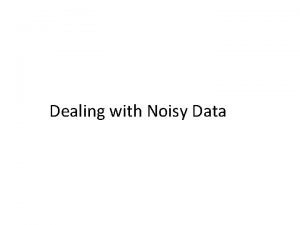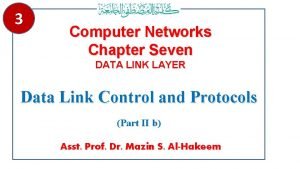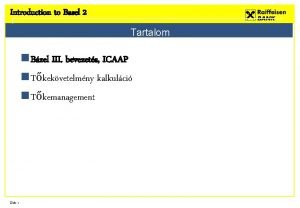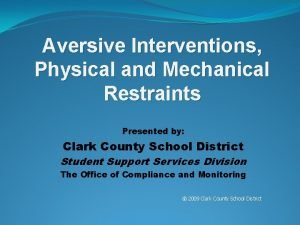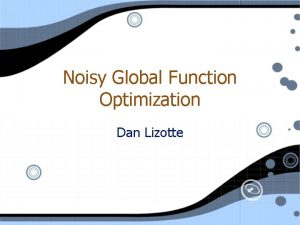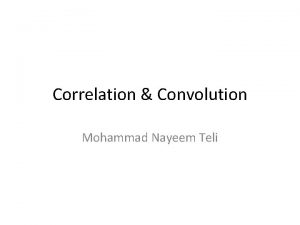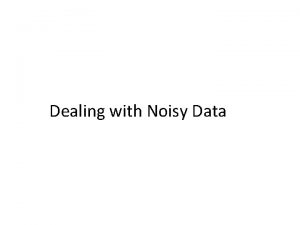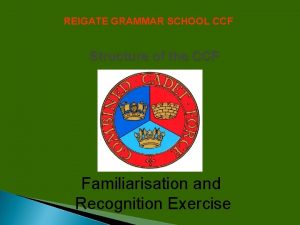Noisy data Di i Crosscorrelation Crosscorrelation function CCF







- Slides: 7

Noisy data Di ± i Cross-correlation • Cross-correlation function (CCF) is defined byscaling a basis function P(Xi ), shifted by an offset X, to fit a set of data Di with associated errors i measured at positions Xi : Shifted basis functions P(X) scaled to data at various shifts: CCF(X): • The width of this profile is well matched to the data. min ~ N 1 error bar: = - min = 1

Noisy data Di ± i Mismatched profiles– 1 • If basis function has form: Profile too narrow • then width of profile is well matched to the data, correlation length ~ FWHM of minimum ~ . • If profile is too narrow: • CCF has – larger error bars – shorter correlation length • The minimum in is shallow. Note local minimum causedby nonlinear model P(X) scaled to data at various shifts: CCF(X): min > N Wider 1 error bar: = - min = 1

Noisy data Di ± i Mismatched profiles– 2 • If basis function has form: Profile too wide • then width of profile is well matched to the data, correlation length ~ FWHM of minimum ~ . • If profile is too wide: • CCF has – smaller error bars – longer correlation length – lower peak value • The minimum in is wider, but not as deep. P(X) scaled to data at various shifts: CCF(X): min > N Wider 1 error bar: = - min = 1

Radial velocities from cross-correlation • Data: spectrum of black-hole binary candidate. GRO J 0422+32 • Basis function: “template” spectrum of normal K 5 V star of known radial velocity. • Cut out H alpha emission line, fit 5 splines to continuum with ± 2 clipping to reject lines.

Wavelength and velocity shifts • Target spectrum Di is measured at wavelengths i and has associated errors i. • Template spectrum P is measured on same (or very similar) wavelength grid. Errors assumed negligible. • For small velocity shift v: Interpolate D i P Note that since D is redshifted relative to P in this example, CCF ( v) will produce a peak at positive v. i

Practical considerations • P(X) and D(X) are usually on slightly different wavelength scales so we can’t just shift the spectra binby-bin. • We want to measure the CCF as a function of relative velocity, not wavelength. • Velocity shift per bin varies with wavelength: • For each velocity shift in CCF: – Loop over selected range of pixels in target spectrum D(X). – Use pixel wavelength and CCF velocity shift to compute corresponding wavelength in template spectrum P(X) – Use linear interpolation to get flux and variance in template spectrum at this wavelength. – Increment summations and proceed to next pixel in target spectrum.

Radial velocity of GRO J 0422+32 • Subtract continuum fit. • Cross-correlate on 6000 A to 6480 A subset of data. • Compute CCF for shifts in range ± 1800 km s– 1. • CCF shows peak between 500 and 600 km s– 1. • Use =1 to get 1 error bar on radial velocity.

